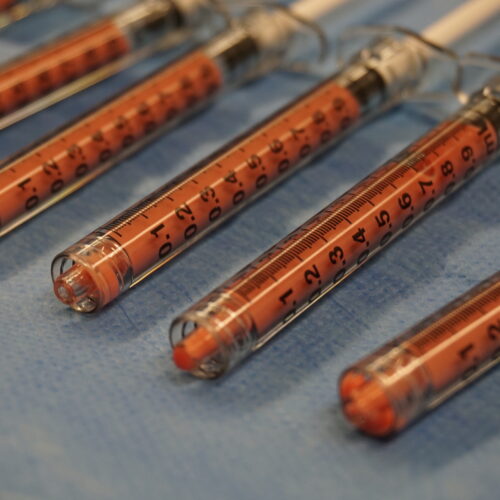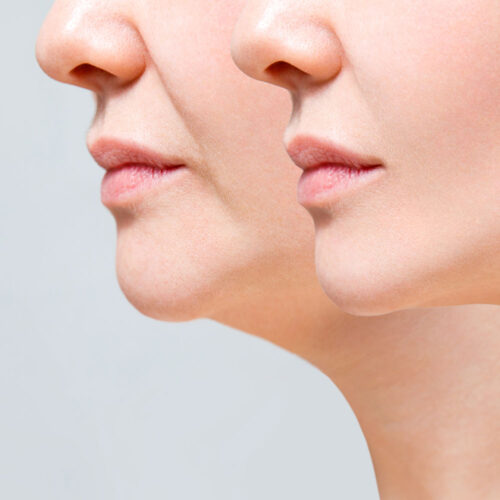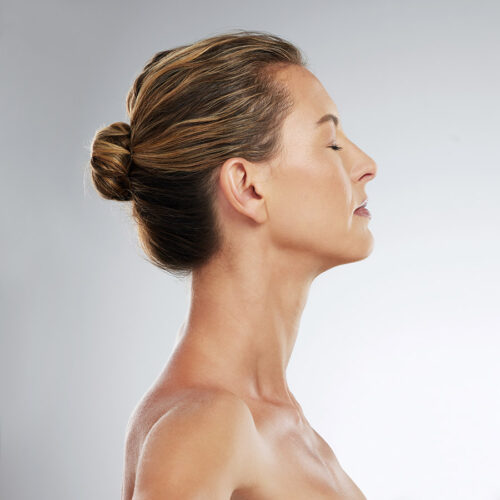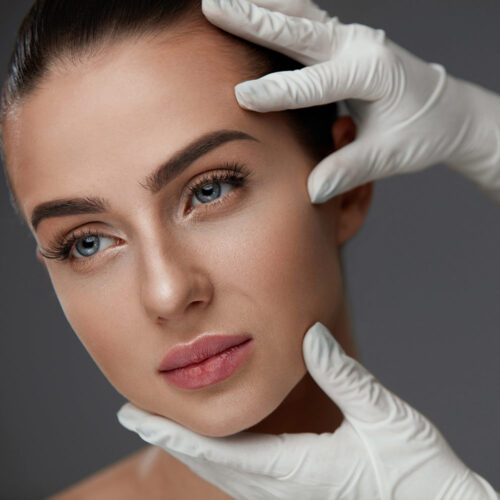Nano Fat Transfer to Face
Mr Olivier Amar - Leading Plastic Surgeon in Chelsea, London

Fat Transfer surgery represents a breakthrough in regenerative medicine, harnessing the power of your body’s natural healing abilities
What is Nano Fat Transfer to Face surgery?
Nano fat transfer to face surgery, also known as autologous fat transfer, is a minimally invasive surgical procedure that uses your body’s own fat to improve facial skin tone and texture, effectively restoring youthful appearance to ageing skin.
This innovative technique involves harvesting fat cells through liposuction from areas like the stomach or thighs, processing them to extract the most valuable source of stem cells, and carefully injecting the enriched cells into the face to target areas for skin rejuvenation. Through an advanced filtration process, the fat becomes a liquid rich SVF (Stromal Vascular Fraction) stem cell solution.
We have this wonderful tissue available to us, in the form of our own fat. I am a huge advocate of using your own body's tissue to regenerate your face
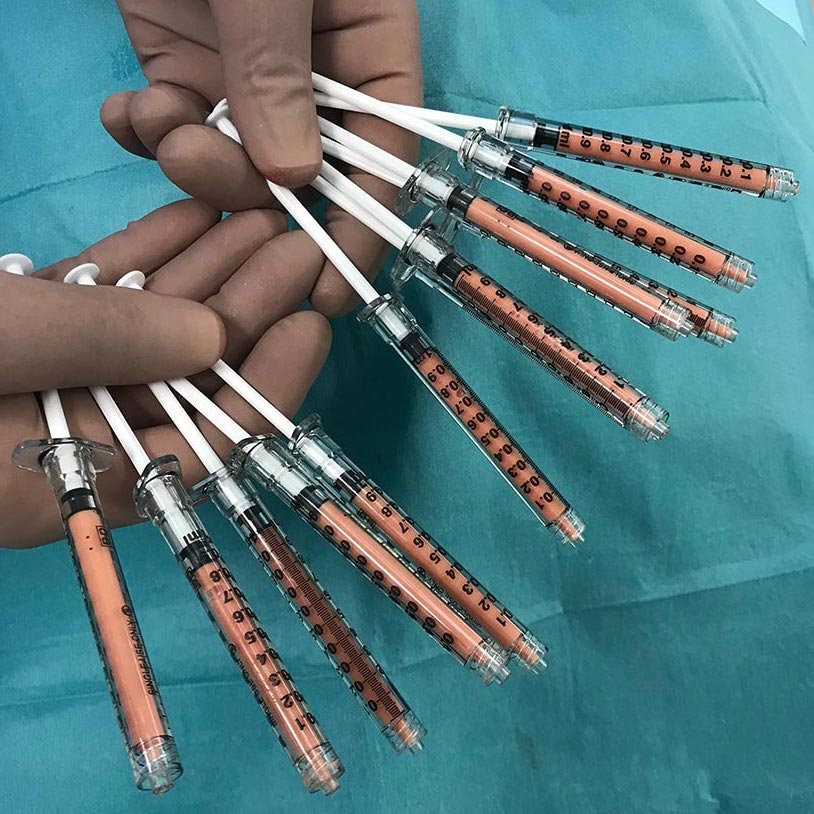
Your consultation
Whether meeting in person or remotely, your consultation with Mr Olivier Amar provides a comprehensive discussion of your hoped for goals and treatment options. To get the most out of your consultation, we recommend reviewing information about your area of interest beforehand.
During your consultation, Mr Olivier Amar will listen to your desired outcomes and goals, conduct a thorough assessment, present appropriate treatment options and explain procedures in detail. This will include a step-by-step surgical process, required preparation, recovery timeline, scar placement and management, anaesthesia options, and potential risks and complications.
A consultation ensures you receive comprehensive information about all options, and understand both benefits and limitations of proposed procedures. You will have the opportunity to ask as many questions as you wish before you decide the next steps together, including the option to take no action.
Advanced Facial Restoration
Mr Olivier Amar, a leading expert in fat transfer procedures, brings over two decades of experience in advanced regenerative techniques. Working alongside his father, Dr R. E. Amar – the pioneer of Facial Autologous Muscular Injection (FAMI) – Mr Amar is now at the forefront of research and innovation in this field.
Risks associated with surgery
Every surgical procedure, while performed with the utmost care and expertise, carries inherent risks. Mr Olivier Amar ensures all patients are fully informed about potential complications before proceeding with any treatment.
General surgical risks include post-operative infection, bleeding and haematoma formation, scarring and wound healing complications, and anaesthesia related complications. During your consultation, Mr Olivier Amar will provide detailed information about procedure specific risks, explain preventive measures and safety protocols, answer all questions about potential complications and provide you with all the information needed to make an informed decision.
Preparing for Your Surgery
All surgical procedures are teamwork between the surgeon and the patient. Just as a runner trains for a marathon, preparation is key for optimal recovery.
From the time you book the procedure ensure you maintain regular, gentle exercise, follow a balanced, nutritious diet, ensure adequate sleep and rest, and manage stress levels effectively. Alcohol consumption should be reduced and smoking stopped or minimised. If a patient feels prepared for surgery, they will arrive for their procedure feeling positive which in turn will reduce any anxiety and encourage stress free recovery.
The day before surgery, our dedicated pre-assessment nursing team will reconfirm your admission time, review fasting requirements, address any last minute questions and provide final preparation instructions.
Type of anaesthesia
Nano fat transfer to face procedures may be performed under local anaesthetic. This means you will be able to go home shortly afterwards. More extensive fat transfer to face is performed under total intravenous anaesthesia (TIVA), a technique of anaesthesia which uses a combination of agents given exclusively via the intravenous route without the use of gas anaesthesia. This means you will sleep comfortably throughout the procedure and wake immediately afterwards with a significantly reduced likelihood of feeling groggy or nauseous. The anaesthesia will be explained to you by your Anaesthetist during the preoperative consultation.
Having surgery under total intravenous anaesthesia (TIVA) allows you to go home the same day to rest and recuperate. Alternatively, we are happy to arrange the procedure at a hospital with an overnight stay facility, organise a nurse to stay with you overnight, or assist with local accommodation arrangements. Mr Olivier Amar will discuss your anaesthesia options and aftercare support in detail during your consultation.
Recovery Guide
Fat transfer is a straightforward and minimally invasive procedure. As a result, there is minimal downtime required. Immediately post-surgery you can expect to experience mild pain and discomfort. Bruising and swelling typically resolves within 5-10 days.
Depending on the type of daily activities, you should be able to resume daily activities within 1-2 days and return to gentle exercise after approximately 2 weeks.
Aftercare Information
One week after surgery you will attend a nurse appointment, at this point your incision sites will be reviewed, stitches removed and initial healing will be assessed. A follow up consultation with Mr Olivier Amar will be scheduled for six weeks after your surgery to assess your overall recovery.
It is your responsibility to attend all scheduled appointments. Failing to attend appointments or follow post-operative instructions may impact your results and final outcome. Regular monitoring ensures optimal healing progression and early detection of complications. Mr Olivier Amar will discuss the post-operative schedule in detail during your consultation.
Scar placement and management
Any scars in the fat harvesting site are typically minimal and strategically placed in discreet locations like the navel or natural body creases. During treatment, small incisions of around 0.5cm will be made. As a leading London based cosmetic surgeon, Mr Olivier Amar specialises in advanced scar management and prevention techniques. Leading up to your surgery or as part of your post-surgical care, a scar management protocol may be initiated using steroid injections and silicone dressings. A treatment course of Aerolase Neo laser is recommended post-surgery.
The Aerolase Neo laser treatment offers significant benefits for scar improvement:
- Stimulates natural collagen production
- Reduces scar pigmentation
- Improves skin texture and appearance
- Softens scar tissue
- Promotes tissue remodelling
- Accelerates bruise healing
Maintaining your results
The result of nano fat transfer to face surgery can be best appreciated after 3-6 months. A combination of maintaining a steady weight and following post-operative instructions is key to a good result.
Certain lifestyle factors, such as smoking and excessive alcohol consumption, can increase the risk of complications during and after surgery. The most common impact of smoking before your surgery is that it increases your chances of developing an infection and inhibits your body’s natural healing processes. This is particularly important for fat grafting surgery in which the fat’s viability post-procedure is materially reduced in a smoker population.
What are the benefits of Nano Fat Transfer to Face surgery?
Nano fat transfer brings multiple benefits to facial rejuvenation:
- Natural looking results using your own tissue
- Improvement in skin tone and texture
- Reduction in fine lines and wrinkles
- Enhanced facial contours
- Harnesses regenerative properties of stem cells
- Minimally invasive procedure with shorter recovery time
- Long lasting results
- Suitable for delicate regions that are hard to treat with synthetic fillers, like tear troughs
Fat transfer represents a breakthrough in regenerative medicine, harnessing the power of your body’s natural healing abilities. This innovative procedure utilises your own stem cells and growth factors found in adipose (fat) tissue to regenerate damaged or ageing tissues, boost vascularisation and nourish the skin. Unlike synthetic alternatives, fat transfer procedures use your body’s own cellular material, eliminating the need for artificial products. The stem cells and growth factors present in processed fat tissue actively contribute to tissue regeneration and healing, making this approach particularly valuable for both cosmetic and reconstructive purposes.
What areas can Nano Fat Transfer to Face surgery treat?
Nano fat brings an all round, subtle and natural softening effect to the face. As it builds on your own internal tissue structures, creating a healing response from deep within the facial tissues, your skin continues to regenerate and restore from the inside out. This procedure is particularly effective for treating dark circles around the eyes. Nano fat creates a protective layer between thin eyelid skin and underlying capillaries, reduces transparency effects causing dark circles, stimulates natural hyaluronic acid production and improves overall under eye appearance. Treatment areas include:
- Face: including tear troughs, under eye dark circles and fine lines around the mouth. General treatment of damaged or aged skin
- Neck area: fine lines and crepey skin
- Decolletage: improving skin texture, appearance and fine lines
- Hands: damaged or aged skin
Frequently Asked Questions
How long does nano fat transfer to face surgery take?
The procedure can take between 45-60 minutes.
What is autologous fat transfer surgery?
Autologous fat transfer is a medical term for fat transfer surgery, where fat is taken from one area of your body and then transferred to another. The key aspect of this procedure is that the fat used comes from the same individual, meaning it is “autologous” (originating from your own body).
Therefore, all fat transfer surgeries are considered autologous fat transfer procedures, as they involve using your own fat to enhance or restore volume in different areas of the body or face.
How can smoking and alcohol affect the results of my fat grafting surgery?
Certain lifestyle factors can increase the risk of complications during and after your surgery. The most common impact of smoking before your surgery is that it increases your chances of developing an infection and inhibits your body’s natural healing processes.
We insist that all patients stop smoking and using nicotine products at least six weeks before surgery. Reducing alcohol intake is also strongly advised. This is particularly important for fat grafting surgery in which the fat’s viability post-procedure is materially reduced in a smoker population.
How should I prepare for surgery?
From the time you book the procedure ensure you maintain regular, gentle exercise, follow a balanced, nutritious diet, ensure adequate sleep and rest, and manage stress levels effectively. Alcohol consumption should be reduced and smoking stopped or minimised. If a patient feels prepared for surgery, they will arrive for their procedure feeling positive which in turn will reduce any anxiety and encourage stress free recovery.
What are the benefits of Nano Fat Transfer to Face surgery?
Nano fat transfer brings multiple benefits to facial rejuvenation:
- Natural looking results using your own tissue
- Improvement in skin tone and texture
- Reduction in fine lines and wrinkles
- Enhanced facial contours
- Harnesses regenerative properties of stem cells
- Minimally invasive procedure with shorter recovery time
- Long lasting results
- Suitable for delicate regions that are hard to treat with synthetic fillers, like tear troughs
WHERE WILL THE INCISIONS BE POSITIONED?
Any scars in the fat harvesting site are typically minimal and strategically placed in discreet locations like the navel or natural body creases. During the fat harvesting, small incisions of around 0.5cm will be made.
When can I return to exercise after surgery?
Depending on the type of daily activities, you should be able to resume daily activities within 1-2 days and return to gentle exercise after approximately 2 weeks.
How many fat cells will survive the procedure?
Between 50 and 70 percent of the fat cells that are transferred during the procedure will survive, as they establish a blood supply and integrate into the surrounding tissue, meaning the results are permanent. Mr Olivier Amar will allow for this in his initial evaluation of the amount of fat to be injected.
WHEN WILL I SEE THE RESULTS from SURGERY?
The result of nano fat transfer to face surgery can be best appreciated after 3-6 months. You can expect progressive improvement during healing. A combination of maintaining a steady weight and following post-operative instructions is key to a good result.
Can any other procedures be done at the same time?
Nano fat transfer to face can also be enriched with Platelet-Rich Plasma (PRP) to improve the longevity and effectiveness of the results.
For enhanced outcomes, nano fat transfer to face can be combined with Reverse by Aerolase to boost skin radiance and reduce visible signs of ageing. With its gentle yet powerful energy output, Reverse by Aerolase promotes the natural process of collagen production, resulting in improved skin elasticity and structural integrity. This boost in collagen enhances the skin’s resilience, elasticity, and texture.
Mr Olivier Amar can utilise fat removed from your body to naturally augment other areas of the body, such as the breasts and buttocks. Fat removal through liposuction with fat transfer breast augmentation or fat transfer to thighs and buttocks can improve your body’s overall harmony and proportions.
What our Nano Fat Transfer to Face patients say
Our patient had nano fat transfer to under eyes area under local anaesthesia, to improve hollowness and dark circles.
“I was concerned by fat and puffiness under my eyes which was caused by previous filler that had migrated. After the previous filler was dissolved, this treatment offered a natural way to improve the sunken and hollowness under my eyes and remedy the puffiness.
I wanted a more natural approach and aimed to avoid any risks related to synthetic filler. I liked the idea of having stem cells added to my skin, not to change the way I looked, just to make me look better.”
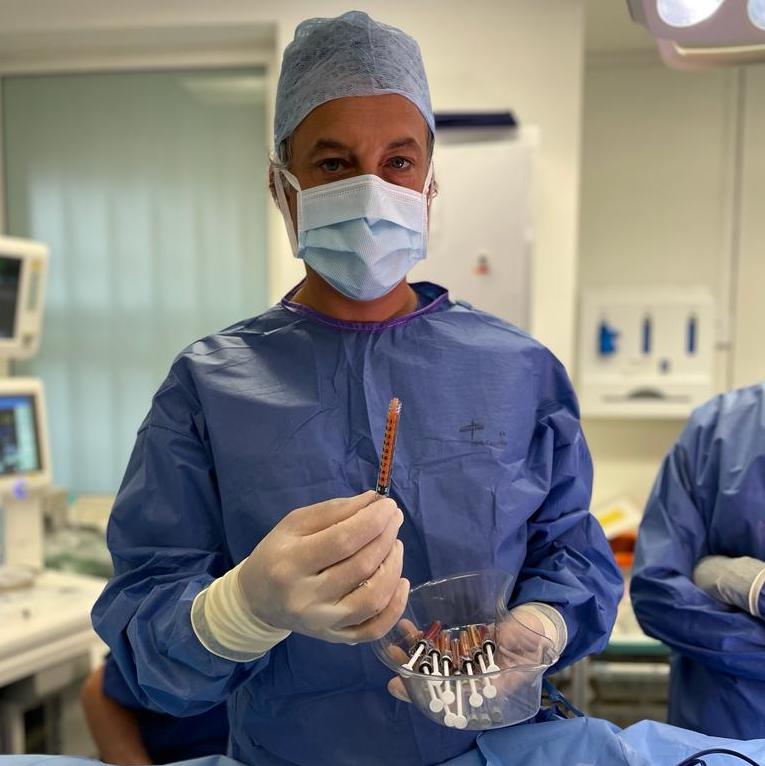
Meet Olivier Amar – Leading Plastic Surgeon in Chelsea, London
Mr Olivier Amar is a renowned London based consultant plastic, reconstructive and aesthetic surgeon specialising in face, breast and body surgery, advanced non-surgical facial rejuvenation, hair loss treatments and regenerative medicine. With over 15 years of experience, Mr Olivier Amar has earned a reputation among both patients and peers alike for transforming cosmetic surgery into an art form.
“Cosmetic surgery is a demanding profession and patient expectations are high. But I am a doctor first and a surgeon second. My only concern is the patient in front of me, fulfilling their needs and managing their expectations. My work is intense; it means everything to me and is my lifelong passion.”
Mr Amar’s commitment to precision and refinement extends through every aspect of patient care, from initial consultation to post-operative support. All treatments take place at his private practice in Chelsea, London. Working alongside Mr Amar is a highly skilled team of dedicated nurses, experienced anaesthetists from leading NHS and private hospitals, and specialised management staff. This collaborative approach ensures comprehensive, world class care for all patients.

